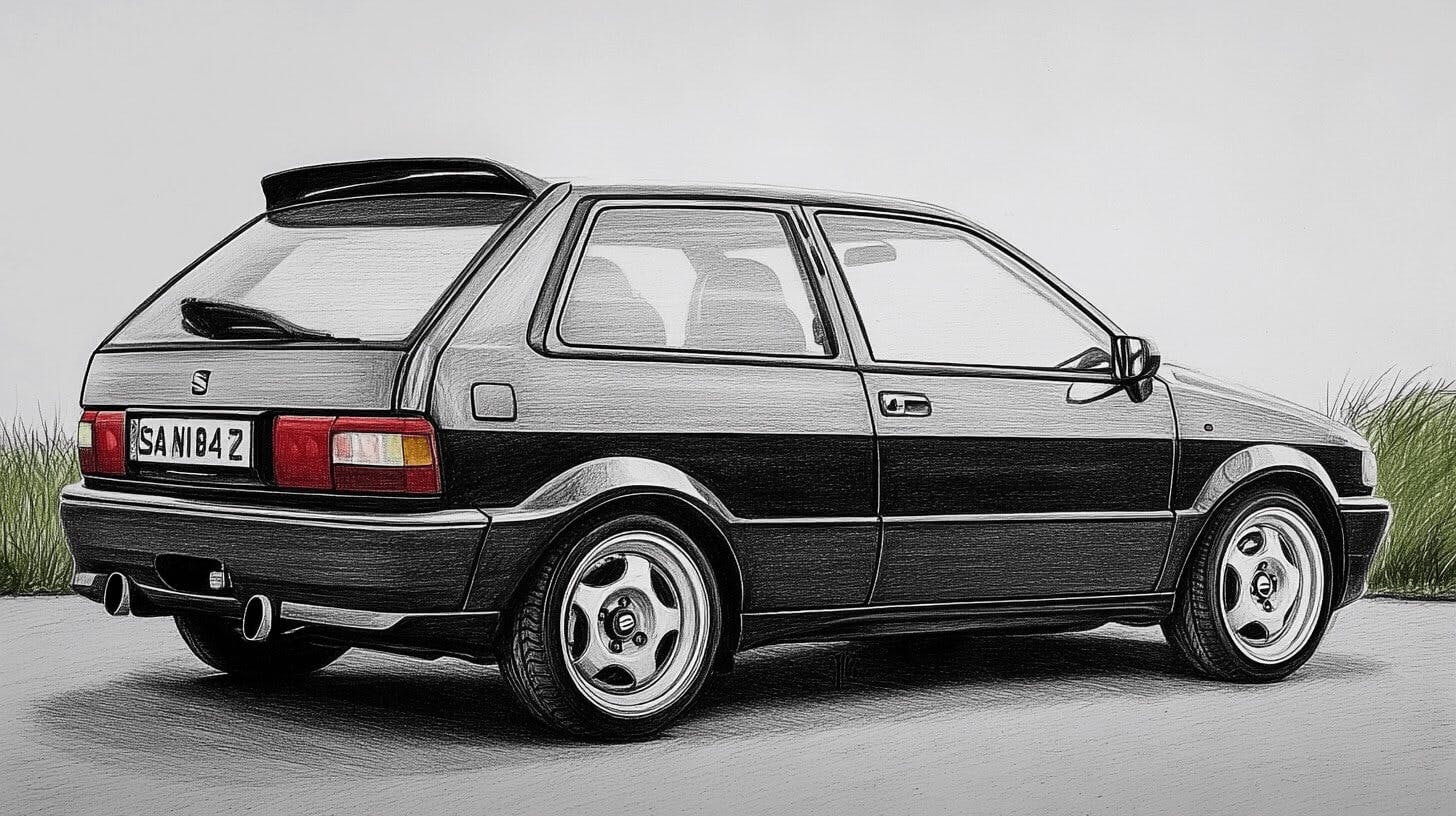From 80s Rebel to Modern-Day Icon: The Evolution of the SEAT Ibiza

If there’s one car that’s grown with me over the years, it’s the SEAT Ibiza. I’ve owned two (Mk3 and Mk5), fettled with more than I can count, and helped countless new owners learn how to care for them. Whether you’re restoring a retro classic or upgrading your daily driver, understanding where your Ibiza came from is the first step to keeping it running right.
So grab a brew, and let’s go generation by generation—from bold beginnings to the sharply styled hatchbacks we know today.
Mk1 (1985–1993): The OG Ibiza
- Bodystyles: Three-door & five-door hatchback
- Highlights: Porsche-tuned engines (“System Porsche”), Giorgetto Giugiaro design, quirky controls behind the steering wheel
The first Ibiza? A bit of a maverick. Styled by the same designer behind the Lotus Esprit, and tuned by Porsche under the bonnet. It may have been based on old Fiat bits, but with VW cash rolling in by 1986, SEAT gave the Ibiza a massive quality lift by 1989 and a major facelift in 1991.
Sarah’s DIY note: Mk1s are becoming collectible. If you’re lucky enough to find one, invest in rust protection and rebuild those quirky electrics—they’re part of its charm!

Mk2 (1993–1999): Polo DNA with Spanish Flair
- Bodystyles: Three-door & five-door hatchback
- Highlights: Based on the VW Polo platform, GTi and Cupra hot hatches, rally pedigree
This was the first Ibiza to share real hardware with the VW Polo, which meant improved quality, better handling, and performance models that set pulses racing. The GTi and Cupra models gave the Ibiza serious street cred—and helped spark the Cupra brand we know today.
Sarah’s DIY tip: Mk2s are straightforward to work on, and the Cupra’s 2.0L engine is a joy to tinker with. Keep an eye on aging plastics and early 90s wiring.

Mk3 (2002–2008): Hot Hatch for the Masses
- Bodystyles: Three-door & five-door hatchback
- Highlights: FR and diesel Cupra launched, sportier design, solid everyday practicality
By the early 2000s, the Ibiza had fully embraced its sporty side. The third-gen looked aggressive, drove better than ever, and had a fresh interior design that made it stand out from the Polo and Fabia.
This is where I got hooked. My old Mk3 FR was my gateway into DIY maintenance—oil changes, air filter swaps, and eventually a full suspension refresh in my driveway!
Sarah’s pick: Look for the FR or diesel Cupra for budget thrills. They're well-built, and parts are still easy to find.

Mk4 (2008–2017): Sharper Looks, Broader Appeal
- Bodystyles: Three-door SC, five-door, and estate ST
- Highlights: First to wear SEAT’s “arrow” design, touchscreen infotainment (2015), Cupra & FR models, hyper-frugal Ecomotive
The Mk4 Ibiza was where SEAT’s design language took a sharp turn—literally. With its angular lines and edgy looks, it stood out. The SC (SportCoupe) looked properly sporty, while the ST estate added proper boot space. It still catered to performance fans, but also to eco-conscious drivers with the ultra-efficient Ecomotive model.
Sarah’s DIY spin: The facelifted models (2015+) have a nice balance of tech and fixability. The ST is ideal if you need space but want to avoid a bulky SUV.

Mk5 (2017–Present): Grown-Up and Refined
- Bodystyle: Five-door hatchback only
- Highlights: No more Cupra/diesel, slicker interior, MQB platform, 2021 dashboard refresh
Now this is the Ibiza I currently own—and while it’s lost some of its hot-hatch energy (RIP Cupra 😢), it’s never been more refined. Built on VW’s latest MQB A0 platform, it’s more Polo-like than ever. You get Apple CarPlay, Android Auto, and trims like FR Sport and Xcellence Lux that bring creature comforts like adaptive cruise and full LED lighting.
The 2021 facelift brought a better dash layout (finally moved the screen up where it belongs), plus nicer materials inside.
Sarah’s verdict: The Mk5 is less “DIY performance” and more “daily driver delight.” But there’s still fun to be had—especially if you’re into subtle mods, detailing, or keeping that TSI engine in top condition.

Final Thoughts
The SEAT Ibiza’s come a long way—from quirky Latin budget car to tech-savvy, Polo-punching hatchback. Whether you fancy the analogue charm of a Mk1, the sweet balance of a Mk3, or the all-rounder goodness of a Mk5, there’s an Ibiza for every budget and skill level.
If you’re just starting your DIY journey, I always say: pick an Ibiza, grab a Haynes manual (or my guides 😉), and get stuck in. They’re affordable, accessible, and most importantly—built to be driven and enjoyed.

Sarah Bennett
Sarah Bennett is a SEAT Ibiza owner and passionate DIY car care enthusiast based in Manchester. With years of experience handling her own maintenance and modifications, Sarah’s mission is to make car maintenance accessible for beginners. She shares easy-to-follow guides focused on keeping SEAT and CUPRA vehicles in top shape without breaking the bank.
